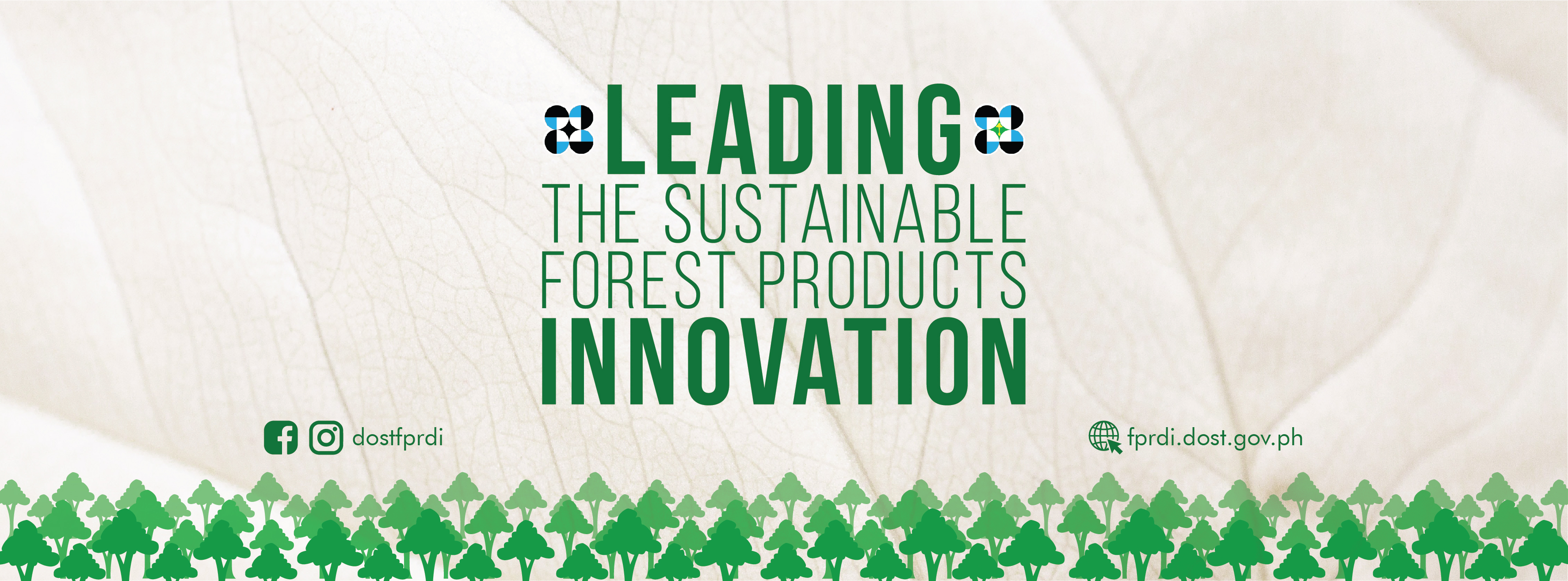Program 7. Philippine Forest Vines for Handicrafts and other Forest-based Industries
- Details
LEADER: For. Mario DR. Ramos
BACKGROUND
Forest vines are one of the least studied non-timber forest products in the country. However, forest vines are important source of raw materials for handicraft industry. According to the study Philippines is globally known for its handicrafts and the industry is the country’s top 11th contributor to the country’s gross domestic product (GDP) for the production and marketing of baskets, bags, decorative and other novelty items.
On the other hand, there are no comprehensive data or research studies conducted on the volume, production, physical and technological properties as well as on the development of utilization technologies on forest vines in the country. The production of forest vines in the country is still in the process of research and development to find a solution on germination and propagation techniques. Environmental agency here in the Philippines are aiding the problem.
FPRDI’s program in Philippines Forest Vines for Handicraft and Furniture Industry aims to provide information and develop processing technologies for the sustainable production and utilization of forest vines for handicrafts and furniture industry in the country. Its intentions are to determine the volume of available forest vines and their rate of natural regeneration; determine the natural durability, anatomical, physical and mechanical, chemical properties of forest vines; develop germination or propagation technologies and establish plantations of forest vines; develop and/or improve processing technologies on preservation, seasoning (drying), finishing and improvement of products made from forest vines and assess the market for forest vines.
Program 6. Drying Technologies Innovation
- Details
LEADER: Engr. Ceazar A. Cuaresma
BACKGROUND
Drying is a vital process in the conversion of various agro-forest and aqua-marine commodities into finished products. This process, if scientifically done for a particular commodity, reduces post-harvest losses and improves productivity and product quality.
Most commodities are traditionally dried to required moisture content by air or sun-drying specifically in the rural areas. This drying method is relatively cheap but inefficient due to high dependence on prevailing weather conditions.
In 1978, FPRDI developed the furnace-type lumber dryer (FTLD). This technology was primarily designed for lumber kiln drying. It is used with slight modification in the design and drying schedule for kiln drying non-timber forest products (NTFP) such as bamboo, rattan, woody vines for furniture and handicrafts. The principle of FTLD operation are also applied to develop new designs of kiln dryers for onion, coffee, copra, palay, corn, pandan leaves and water hyacinth stalks.
The FTLD is one of the most in-demand technologies of the institute. FPRDI database (TSD, 2013) show that since 1979 to November 2013 there were 230 units of FTLD installed in different regions of the country or an average of 7 units FTLD installation per year. The installed FTLD shave loading capacities ranging from 1,000 to 4,500 bd.ft. (42%) 5,000 to 15,000 bd.ft. (52%) and the rest 20,000 to 50,000 bd.ft.
Based on the assessment conducted by FPRDI (Mari, 2013) on the installed FTLD’s, the following observations were gathered: a) usual damage noted were cracks on the dryer and outer furnace wall, deteriorated fluepipe; corrosion of chimney assembly; breakdown of motors; and b) some dryers operate occasionally due to limited supply of lumber while other adoptors had already closed shop.
In another study conducted by FPRDI (Cortiguerra, 2013), the required number of FTLDs of various capacities based on log production and lumber recovery of ITPS such as Yemane (Gmelina arborea), Bagras (Eucalyptus deglupta), Big-leafed Mahogany (Swietenia macrophylla) and Falcata or Moluccan Sau (Paraserianthes falcataria) per region were projected. For Yemane, log production was highest in Region 6 followed by regions 11 and 13 with total aggregate volume of 79,303 cu.m. (33,624,472 bd.ft.). To improve the quality of the lumber and resulting products for the housing components, furniture and allied industries, kiln drying is a must. The number of 10,000 bd.ft. capacity FTLD needed for region 6 alone is 1006 units. For the other IPTS such as Bagras, log production was noted in Regions 9, 10, 11, 12 and 13 with R13 showing highest log production and projected need for 10,000 bd.ft. capacity FTLD is 602 units. For big-leafed Mahogany, R6 showed the highest log production and the need for 10,000 bd.ft. capacity FTLD is projected at 990 units.
For the improved productivity, thermal efficiency and broader choice of customers, the FPRDI-developed drying technologies need continuous development and innovation.
GOAL
To develop thermally efficient and innovative designs of kiln dryers that would enhance the productivity, product quality and competitiveness of MSMEs in the agro-forest based and allied sector.
OBJECTIVES
- To improve and semi-automate the operation of the FPRDI-designed FTLD.
- To develop a solar-powered lumber dryer with biomass auxiliary heater.
- To develop a portable kiln dryer for NTFP and handicrafts.
- To design and develop a modified heat-exchanger for drying agro-forest and aqua-marine products.
- To develop a high-temperature kiln dryer for thermal modification of wood and NWFP.
- To design and develop an air-heated Vacuum furnace type dryer.
Program 5. Biomass as Green Energy Source and other related products
- Details
LEADER: Dr. Jennifer P. Tamayo
BACKGROUND
Biofuels refers to bioethanol, biodiesel and other fuels derived from biomass which is primarily used for automotive, thermal and power generation. Although there are existing studies which can be basis for production but these are not sufficient to sustain the growing demands due to depletion of fossil-based fuels. Supported by Biofuels Act of 2006 or RA 9361, continuous search for renewable sources are now being undertaken to reduce the country’s dependence on petroleum-based fuels. The Renewable Energy Act of 2008 or RA 9513 promotes the development, utilization, commercialization of renewable energy resources. It supports the development and optimal use of country’s renewable resources to address the challenges of climate change, energy security and access to energy.
Based on the information from study of UNEP-DTIE-IETC and Development Academy of the Philippines in 2009, some 1.17 M tons, 489, 000 tons, 1.5 M tons of sugar cane trash, corn cobs and rice hull, respectively are locally available resources for biofuel production. Forestry statistics shows that the estimated total logging residues in 2011 is 92 thousand cu. m which can be converted to biofuels. With the support of international funding organizations and government’s focus on thematic areas of interest on sustainable energy and harnessing emerging technologies for national competitiveness, it is envisioned that energy problem in vulnerable areas will be alleviated.
GOAL
To develop process and equipment for biofuel production geared towards addressing the fuel need of electricity-deprived areas.
OBJECTIVES
- To determine the heating value of various biomass.
- To develop solid and liquid biofuels.
- To design and develop charcoal mixer and sawdust pelletizer.
- To develop and characterize bio-oil from lingo-cellulosic materials.
- To determine the technical and economic viability of bio-oil production on pilot-scale.











